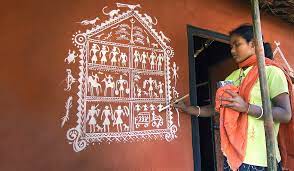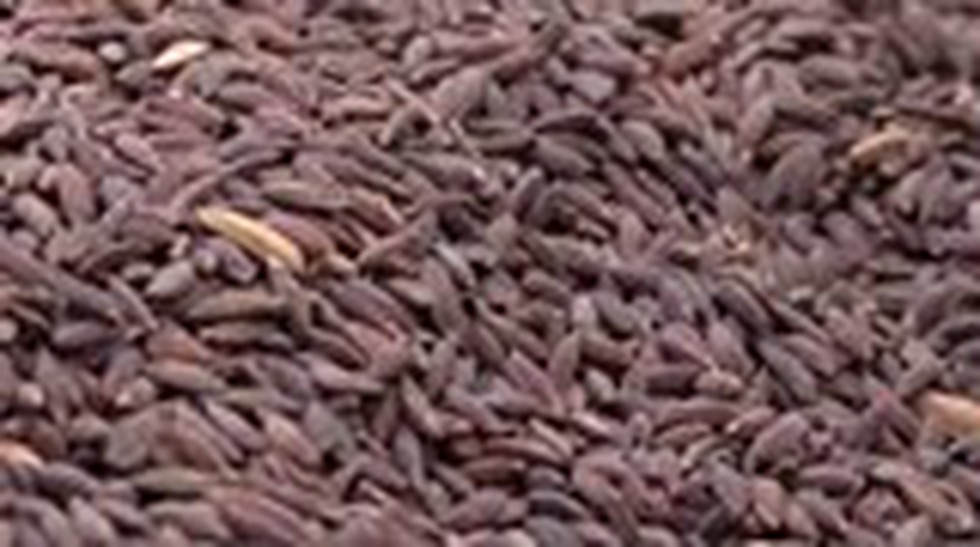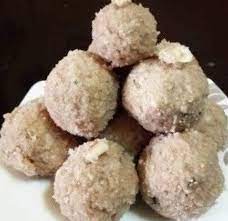 By Bizodisha Bureau, Bhubaneswar, January 7, 2024: Seven products from Odisha, the Similipal Kai chutney made with red weaver ants, the embroidered Kapdaganda shawl, Lanjia Saura Painting, Koraput Kala Jeera Rice, Nayagarh Kanteimundi Brinjal, Odisha Khajuri Guda and Dhenkanal Magji have bagged the coveted Geographical Indication (GI) tag in recognition of their exclusivity to the state.
By Bizodisha Bureau, Bhubaneswar, January 7, 2024: Seven products from Odisha, the Similipal Kai chutney made with red weaver ants, the embroidered Kapdaganda shawl, Lanjia Saura Painting, Koraput Kala Jeera Rice, Nayagarh Kanteimundi Brinjal, Odisha Khajuri Guda and Dhenkanal Magji have bagged the coveted Geographical Indication (GI) tag in recognition of their exclusivity to the state.
Similipal Kai chutney made with red weaver ants is a traditional delicacy of the tribals in Odisha’s Mayurbhanj district. The ants are found in the forests of Mayurbhanj, including in the Similipal forests – Asia’s second-largest biosphere. Rich in medicinal and nutritional value, the chutney is believed to be a good source of nutrients like protein, calcium, zinc, vitamin B-12, iron, magnesium, potassium, etc.
The tribals prepare the Kai chutney by grinding the ants manually on a Sil Batta or the grinding stone. Mayurbhanj’s tribals also earn their livelihood by selling the red ants and the chutney made from the ants. They believe that its consumption helps boost immunity and prevents diseases.
Kapdaganda shawl is embroidered on an off-white coarse cloth with red, yellow and green coloured threads, with each colour holding significance. Green symbolises the mountains and hills, and yellow stands for peace and happiness. Red stands as the symbol of blood. As per the Odisha State Tribal Museum, “Worn by both men and women this distinctive shawl is embroidered with red, yellow and green thread and is often presented during courtship as a sign of formal commitment.”
Woven and embroidered by the women of the Dongria Kondh tribe, a particularly vulnerable tribal group (PVTG) in the Niyamgiri hills in Odisha’s Rayagada and Kalahandi districts, the shawl reflects the rich tribal heritage of the Dongria Kondhs.
The motifs in the shawls are mostly lines and triangles, believed to be a reflection of the importance of mountains for the community. The shawl is worn by both men and women and the Dongrias gift it to their family members as a token of love and affection.
Lanjia Saura Painting, one of the oldest tribal art forms, is also known as Idital. The artworks are famous for their beauty, aesthetics, ritualistic association and iconography. The Odisha State Tribal Museum states that there are 62 types of idital, each for a specific occasion or ritual. The Odisha State Tribal Museum states that there are 62 types of idital, each for a specific occasion or ritual.
The art form belongs to the Lanjia Saura community, a PVTG largely residing in the Rayagada district. These paintings are in the form of exterior murals painted on the mud walls of homes. White paintings figure over a crimson-maroon background.
It is believed that the Lanjia Sauras paint their walls with Idital artworks to show gratitude to their deities and forefathers, and also for the well-being of their community. Reflecting the love and affection of the primitive tribes for nature, they feature subjects like tribal humans, trees, animals, birds, the Sun and the Moon.
 Koraput Kala Jeera Rice, also known as the ‘Prince of Rice’, is famous for its aroma, taste, texture and nutritional value. Tribal farmers of the Koraput region have preserved the rice variety for around 1,000 years. As the rice grains resemble cumin seeds, it is also called Kala Jeera. Consumption of the rice variety helps in increasing haemoglobin levels and improves metabolism in the body.
Koraput Kala Jeera Rice, also known as the ‘Prince of Rice’, is famous for its aroma, taste, texture and nutritional value. Tribal farmers of the Koraput region have preserved the rice variety for around 1,000 years. As the rice grains resemble cumin seeds, it is also called Kala Jeera. Consumption of the rice variety helps in increasing haemoglobin levels and improves metabolism in the body.
The farmers and producers of Koraput Kala Jeera rice have followed the traditional knowledge and practices in cultivation. Ancient tales also speak about the physical, mental and spiritual delights resulting from the consumption of the rice variety.
Nayagarh Kanteimundi Brinjal is known for its prickly thorns on the stems and the whole plant. The green and round fruits contain more seeds as compared to other genotypes. It is famous for its unique taste and relatively short quick cooking time. The plants are resistant to major insects and can be grown with minimal pesticide.
It is being widely cultivated in Nayagarh district of the state. The growers are getting a yield of up to 200 quintals per hectare and selling at around Rs 60 per kg. Historical records also suggest that the locals got the brinjal from the hilly areas. They collected seeds from it and started raising seedlings nearly 100 years ago.
Odisha’s “Khajuri Guda” or jaggery is a natural sweetener extracted from date palm trees and has its origin in the Gajapati district. Traditionally, the jaggery is prepared in a trapezoidal form called ‘Patali Gur’ and is organic by nature. It is dark brown and has a unique taste.
 Last but not the least Dhenkanal Magji is a type of sweet made from cheese from buffalo milk, with distinct characteristics in terms of appearance, taste, flavour, shape, and size. It also has unique nutritional values that distinguish it from other cheese-based sweets.
Last but not the least Dhenkanal Magji is a type of sweet made from cheese from buffalo milk, with distinct characteristics in terms of appearance, taste, flavour, shape, and size. It also has unique nutritional values that distinguish it from other cheese-based sweets.
Thousands of people were said to be earning their livelihood through animal husbandry, especially buffalo rearing, during the British era. The region was the hinterland of buffalo milk production and cheese was the third largest produce, after milk and curd. Mandar-Sadangi area of Gondia block is believed to be the centre of origin of the sweet stuff, which has now been spread to the entire district.
A marker of authentic products, the GI tags also help protect the interests of the local growers and artisans by preventing duplicity of the products and sale from unauthorised traders. Consumers, through the tags, can know which goods are certified. Here is a quick look at the seven products and what makes them distinctive.



Leave a Reply
Be the First to Comment!